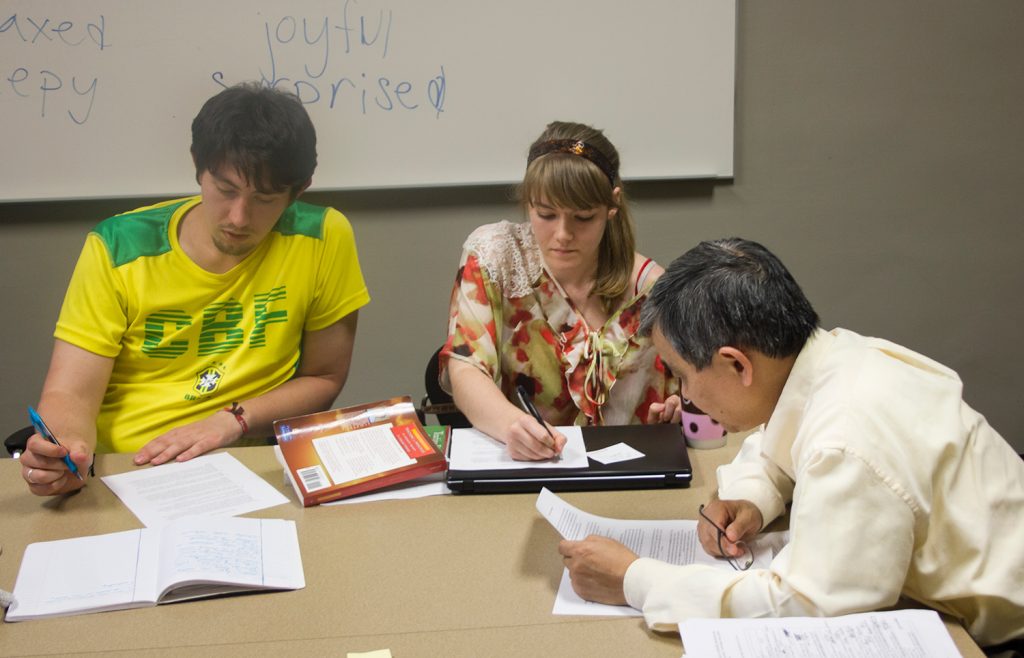Instructor: Dilin Liu
Course: Structure and Usage (EN 424/524)
Audience: Undergraduate and graduate students
Structure and Usage is an advanced course on English grammar and usages, mainly using contemporary linguistic approaches, such as cognitive linguistics, corpus linguistics (i.e., the study of language using large-sized computer-searchable collections of language data), functional linguistics, and the lexicogrammar approach, which treats lexis and grammar as the two ends of one continuum rather than as two separate domains (the view held by traditional linguistic approaches).
What are your goals for this course?
Students will grasp the contemporary lexicogrammatical usages and learn how such usages vary across social contexts so that they will be able to use lexicogrammar more effectively in speaking and writing. In the process, students will also develop better critical thinking and problem-solving skills as well as collaborative skills.
What are your favorite teaching strategies in this class?
My favorite teaching strategies are to engage students in corpus and other empirical studies, both individually and collectively, to explore how speakers and writers choose lexicogrammatical structures and usages for effective communication.
 The students each have to do an individual corpus-based study and a group empirical project study that involves corpus and/or other empirical data. Engaging students in research that uses computerized corpora and other forms of authentic language data is the best way to study English grammar and usage and understand that English grammar and usage rules are not a fixed but a dynamic system that evolves with time and varies across registers and contexts.
The students each have to do an individual corpus-based study and a group empirical project study that involves corpus and/or other empirical data. Engaging students in research that uses computerized corpora and other forms of authentic language data is the best way to study English grammar and usage and understand that English grammar and usage rules are not a fixed but a dynamic system that evolves with time and varies across registers and contexts.
Furthermore, the group research project helps students learn how to successfully collaborate with others — an ability that’s required in today’s workplace.
What tools or software do you encourage students to use?
Four corpus research, our students use online corpora including the online Corpus of Contemporary American English (COCA), Corpus of Historical American English (COHA), etc. In other words, they can assess these corpora online. For some statistical analysis that are not available on the corpora, they use SPSS (available on all UA computers) when needed.
What challenges does this course present?
Often students come to the course with the misunderstanding that grammar is a boring subject that involves a lot of dull, mechanic exercises and that grammar is a fixed, prescribed system.
What are your solutions?
I have students examine authentic speeches and writings in corpora to explore how lexicogrammatical usages vary across historical, situational, and social contexts and how authors make their lexicogrammatical choices based on their purpose for effective communication. In the process, students learn that grammar is not a fixed, prescribed set of rules, but a dynamic system that speakers and writers employ for effective communication.
What else do you want students to leave your course knowing?
I want students to know not only what the current English structure and usage patterns and rules are but also how to identify and evaluate lexicogrammatical usages themselves. I also want them to know how to apply what they have learned about English grammar to their fields of work and to become more effective speakers and writers.